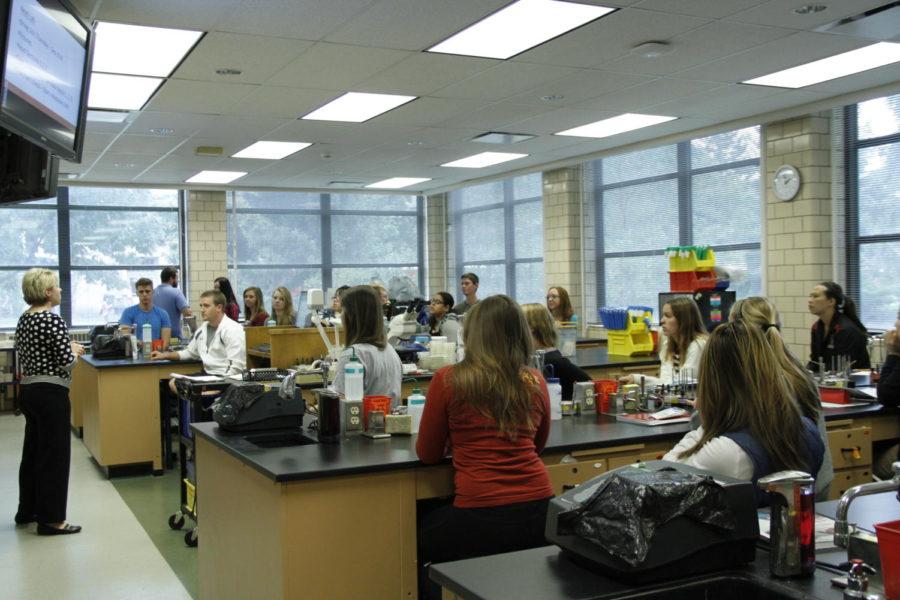5 things to know about disappearing microbiota hypothesis
Jonathan Laczniak/Iowa State Daily
Claudia Lemper lectures to her Microbiology 302L class about their research projects to find and test soil samples in Science I on Sept. 23. Lemper’s goal for her lab class is to stop antibiotic resistance, but she also hopes that this class will get students “excited about science.” Lemper works as a part of the Small World Initiative.
September 25, 2014
Dr. Martin Blaser, professor at New York University and director of the NYU Human Microbiome project, spoke to ISU students and faculty Sept. 18 about losing vital microbes and the dangers of overusing antibiotics.
Here are the five tenants of his Disappearing Microbiota Hypothesis:
-
Most cells in the human body are microbes. Microbes are not random — they have co-evolved with us.
-
We have many more microbes than cells. They’re part of human physiology; they help defend against invaders, make vitamins and digest food.
-
As a result of modern life, medicine and public health, microbes are going away.
-
The disappearance of these microbes has consequences. Some are good and some are bad.
- We need to understand the problem and turn it around for the next generation.






